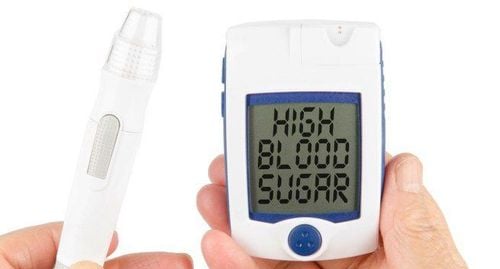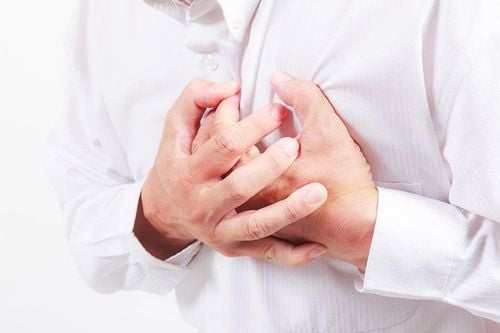This is an automatically translated article.
The article is professionally consulted by MSc.BS.Ngo Dac Thanh Huy, MSc.BS. Pham Van Hung- Cardiologist, Vinmec International Hospital Da Nang.Pain in the middle of the chest is a common feeling in the community, especially in the elderly and at risk of coronary artery disease. This is a warning symptom of many dangerous cardiovascular events. It is necessary to be equipped with knowledge about chest pain, timely and correct treatment orientation to protect the health of yourself and your loved ones.
1. What is mid chest pain?
Middle chest pain is when the patient feels pain in the middle of the chest or it can be deviated to the left. Sometimes, patients do not describe pain but describe a sensation that resembles pressure, squeezing, or squeezing; sometimes, accompanied by palpitations, shortness of breath, sweating, weakness in limbs.
The most worrisome source of repeated mid-chest pain is the blockage of the blood vessels that feed the heart. This condition causes ischemia in the heart muscle, if it progresses for a long time, it will lead to myocardial infarction, increasing the risk of sudden death.
Trắc nghiệm: Bạn có hiểu đúng về huyết áp cao không?
Huyết áp cao còn được gọi là kẻ giết người thầm lặng vì bệnh thường không có triệu chứng. Thiếu hụt kiến thức về huyết áp cao có thể làm cho tình trạng bệnh trở nên trầm trọng hơn. Dưới đây là những câu hỏi trắc nghiệm vui giúp bạn hiểu đúng về bệnh cao huyết áp.2. What is the cause of chest pain?
The ribcage is the place where many internal organs are stored. Therefore, any injury inside the body also causes the patient to feel pain in the middle of the chest. Even organs in the abdomen such as the stomach, liver, spleen, pancreas, etc., when experiencing pathology, can still manifest with chest pain due to the reference pain mechanism, which spreads according to the original nerve conduction. Water. Therefore, detailed exploration of pain characteristics is extremely important to determine the correct cause.
The first reason doctors think of is cardiovascular disease. Abnormalities in the coronary arteries, arteriosclerosis, hypoperfusion, and myocardial insufficiency most often manifest as chest pain as the first symptom. The patient describes the pain is located in front of the sternum, deviating to the pre-heart area, often occurs when exerting, walking quickly, climbing stairs, being psychologically agitated,...
Pain will decrease or stop when rest. A few may have pain even at rest, sudden heaviness in the chest with intense intensity, accompanied by sweating, shortness of breath, no relief at rest, causing the patient to hold his chest because of pain, it is necessary to think of the possibility of infarction. Myocardium and coronary artery are completely blocked. In addition, other cardiovascular diseases such as coronary artery spasm, arrhythmia, heart failure, myocarditis, ... are also often manifested by pain in the middle of the chest.
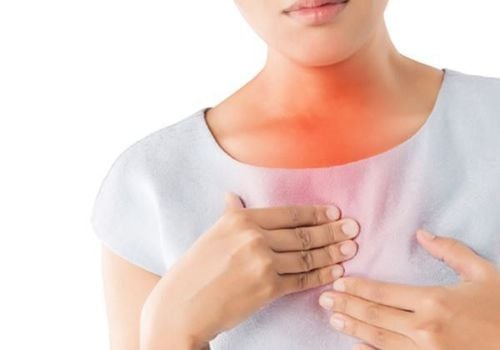
Besides the heart, diseases of the respiratory organs such as pneumonia, asthma, obstructive pulmonary disease, pleurisy, effusion, pneumothorax, pulmonary embolism, lung cancer, ... In addition to the symptoms of fever, cough, shortness of breath, and wheezing, the patient may report chest pain and tightness.
In some cases, patients feel that the pain is located on the chest wall, localized or spread along the ribs, thinking it is due to pain of the intercostal nerve or pain due to muscle and bone in the chest wall after trauma, posture. compress.
Middle chest pain is also a symptom of diseases of the upper digestive system. Patients report vague chest pain and accompanied by poor appetite, anorexia, nausea, vomiting, belching, belching, flatulence, abdominal distension,... Common causes are peptic ulcers. , gastroesophageal reflux disease , colitis , ... In addition, chest pain can also be caused by diaphragmatic abscess, liver abscess.
Cases of chest pain are relatively "benign" than in perimenopausal women, the mechanism is due to female sex hormone changes, or due to psychological causes, fear, anxiety .
3. Is middle chest pain dangerous?
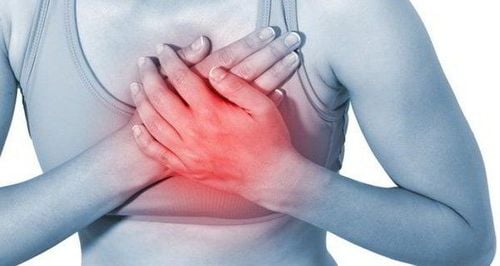
If the middle chest pain is truly cardiovascular, this is a dangerous, life-threatening condition at any time. With stable angina attacks, which occur only when the patient is exerted, decrease at rest is a sign that the coronary arteries have begun to narrow, reducing blood perfusion to the heart. If there is a subjective attitude, this situation lasts long without any intervention, it will lead to myocardial infarction, necrosis of the heart muscle, and if not treated promptly, will lead to sudden cardiac death.
Middle chest pain due to other organ systems also proves that the disease is progressing with a severe degree, requiring aggressive treatment methods, avoiding the disease spreading further, causing unpredictable complications.
4. Who can get pain in the middle of the chest?
Chest pain with cardiac etiology is the most common and worrisome disease, especially in subjects at high risk of atherosclerosis.Those are the elderly, have high blood pressure, diabetes, dyslipidemia, chronic kidney disease, obesity, smoking and a sedentary lifestyle. Women have an increased risk of coronary heart disease as they approach menopause. If there is a family history of parents, siblings, or grandparents suffering from cardiovascular events at a relatively young age such as myocardial infarction, ischemic cardiomyopathy, cerebral infarction,... before 55 age for men, before age 65 for women, the risk of coronary heart disease is higher.
5. What to do when you have chest pain?
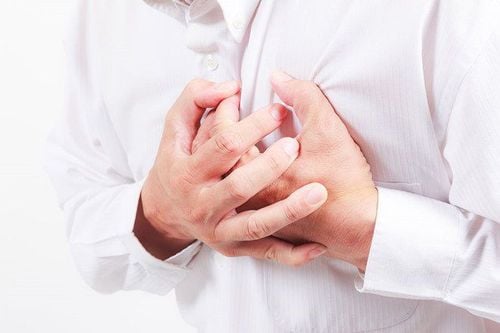
However, the patient should visit a specialist, actively diagnose the cause and adhere to treatment, prevention is what really needs to be done. It is necessary to take medicine for cardiovascular disease, diabetes, blood lipid disease, blood pressure, ... every day and re-examine when the medicine runs out if any of these diseases are present.
Besides, a reasonable diet, a variety of vegetables and fruits, limiting fat and fat, living, exercising, and resting in moderation also helps to improve angina. Do not smoke, limit the use of stimulants such as alcohol, beer, coffee, ... Choosing for yourself an active lifestyle, optimistic thinking, less sadness, anger is also a way to prevent attacks. pain subsides quickly.
In short, pain in the middle of the chest is an alarm sign of cardiovascular diseases as well as diseases of the respiratory and digestive systems. Do not be subjective, it is necessary to examine and treat early to prevent unfortunate risks.
Please dial HOTLINE for more information or register for an appointment HERE. Download MyVinmec app to make appointments faster and to manage your bookings easily.





